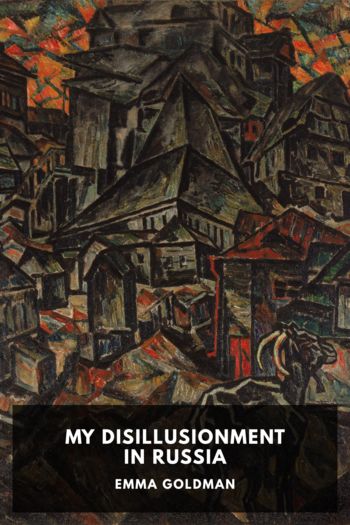Monkey Boy Francisco Goldman (best ereader for students .txt) 📖

- Author: Francisco Goldman
Book online «Monkey Boy Francisco Goldman (best ereader for students .txt) 📖». Author Francisco Goldman
I’m very pleased with how beautifully it’s turned out, says Herb. Aren’t you?
Oh yes, Herb, I am, she says happily. I think you’re every little bit as good as John Singer Sargent. There’s no equivalent way to say “every little bit as” in Spanish. You can say a “little bit of ” or a “little pinch of.” She enjoys correctly wielding this coy American idiom.
Herb has begun every session so far by saying: You know it’s impossible to paint a woman’s face as pretty as it really is, Yolanda. Eventually he confessed that he was quoting Sargent. Herb intensely identifies with Sargent: a successful portrait painter with Boston roots and larger artistic ambitions, who went to the World War I battlefields to paint their horrors, just as Herb went to the Second World War to both contribute to and try to end its horrors. Sargent was also a big masculine man who liked to go to rough sporting events and who never married, essentially a loner despite many friendships, including with many of the women he painted.
When Herb was only nine, his gift for artistic drawing already noted by his school art teacher, his older brother took him to see Sargent at work on his series of murals at the Boston Public Library. His older brother was a friend of the son of one of the guards, and they’d arranged to go in the morning, before the library was open but when the artist was already at work. Herb stood at one end of the hall watching through the chilly gray light as Sargent, at the opposite end, stood on a ladder painting along a seam in one of his murals. His bowler hat had so many paintbrushes sticking up out of the band, it looked like Chief Massasoit’s headdress, and he wore a thoroughly splotched vest of many colors that he wiped his brushes on, though it was a tailored suit vest, not a wooly one like Herb’s. The guard told Herb and his brother that when Sargent left the library to go to one of his society parties in the evening, he’d keep the vest on and come back still wearing it in the mornings. How do you like that for an anecdote, Yolanda? Isn’t that wonderful?
Sargent was working on one of the last murals of his series The Triumph of Religion, which was supposed to be, you know, says Herb, the American Sistine Chapel. The expectations for it were very high and not just in Boston. But Sargent never finished it. Probably because of the synagogue mural that represents Judaism as kneeling, blindfolded, her scepter snapped in half, distinctly not triumphing. Yolanda, do you get my meaning? Not triumphing. In the mural at the opposite end of that same wall a radiant golden girl in a corona of light symbolizes the Christian Church, triumphant. You can see why some people were upset, not just Jews, but also taxpaying secular Americans who didn’t think the public library should be used to denigrate one religion at the expense of another. Between those two murals on that wall was a larger panel, still blank, that according to Sargent’s plan was going to sum up and conclude the entire series. Maybe he had in mind an allegory of varied images that was somehow going to cast a new light on the synagogue mural and absorb even Judaism into the Triumph of Religion in America. But I doubt it, says Herb. The scandal that started in Boston was reported on and argued over throughout the country. My own art teacher was one of the Jews who joined the protests at the library, Yolanda, demanding that the synagogue mural be removed. I think that even Bostonians who agreed with the protests in principal asked, Who are these bearded overwrought maniacs, shouting in their foreign and Bolshevik accents? Where did they come from?
After a pause, he continues, But poor Sargent, really, I think it was a sort of innocence that did him in. Defending himself with all that art historical baloney about medieval traditions in religious painting from Michelangelo to the Reims Cathedral. All fine if you’re painting in a medieval cathedral or even a contemporary one, where I suppose you’re allowed to tell your worshippers a version of their own story, but not in a democratic public institution. The library’s Brahmin trustees didn’t back down; they supported Sargent to the end. But I think their support embarrassed him. A fool he wasn’t; he knew what was going on. He finally understood the emptiness of what he was trying to do, the vain grandiosity of what was essentially an academic imitation of a kind of art he really had no deep feeling for, however excellent the execution. So he left that culminating center panel blank and walked away. He felt exposed and knew that he had nothing of true meaning and conviction to put up there. Blaming the Jews and their protests provided an easy escape. In London, you know, Sargent was put down by the snobs as “the painter of Jews.” But there was some truth to it. Somewhere he said that he far preferred the emotional and intelligent liveliness of his Jewish women to the dullness of most of the British aristocratic women whose portraits he





Comments (0)